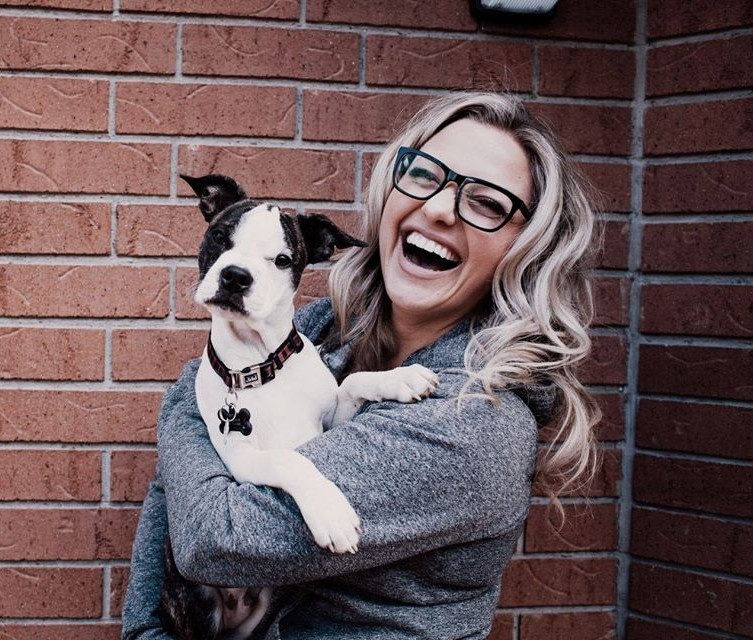How Alvaro Exploded Ashley Shaw’s Revenue From $50,000 to $110,000 a Month
— In 6 Months


“I hated running my own ads as it was so time- consuming and tedious. It was a relief to have someone else doing the testing and working with the Rick Mulready principles.
Having Alvaro and his team help us hone in on our audiences and do all the heavy lifting took the pressure off and allowed me to focus on higher priority items.
But the best part was watching my monthly revenue start to quickly shoot up — from $50,000 to $110,000!”
– Ashley Shaw, Marketing Coach for Fitness Coaches
Ashley Shaw is a fitness coach who helps other fitness coaches create a successful business. She was consistently bringing in 50K a month, but she was stuck there. She couldn’t seem to grow beyond that.
She was also having trouble measuring how effective her lead gen campaigns were. She didn’t know how long it took a lead to buy or how profitable they were to her.
Enter: Alvaro Berrios, Facebook Ads Manager Genius.
When Ashley came to Alvaro, she had three main sources of revenue:
1. Selling social media templates 365-days a year
2. A monthly membership program
3. Ongoing lead gen campaigns
But first: Internet stalking scouring
Before Alvaro did anything with Ashley’s ad campaigns, he and his team did two weeks of research learning about her ideal clients. Ashley already knew they were women between the ages of 30 and 45 who make $80,000 a year…
…but she needed to get deeper insights if she was going to scale past her status quo of 50K a month.
To understand Ashley’s audience inside and out, Alvaro and his team took a 3-pronged approach:
1. Scouring the internet for where her ideal clients hang out
This includes subreddits, Facebook groups, even Amazon reviews they left. When Alvaro and his team comb the internet, they look for how people describe their emotions when they experience transformation/light-bulb moments and how they talk about their specific pain points and challenges.
Alvaro then takes their statements almost word-for-word and puts them in the new ads. He does this so potential customers reading the ads go “Yes! This is exactly me!” and then click the CTA.
2. Creating an Empathy Map
The goal of the Empathy Map is to understand what an average day is like for Ashley’s ideal client.
At this point, Alvaro knew everything from who her audience spends time with to who their role models are. (He even found nuances like what’s on their playlist and what offers are landing in their inbox.)
3. Creating an Ideal Customer Formula
This is where Alvaro boils down the crucial elements that need to be included in Ashley’s new ads: pain points, benefits, challenges, common bonds Ashley shares with her audience, and her unique mechanism.
Every ad headline includes 2-3 crucial elements and various ones are woven into the rest of her ad. This helps keep Alvaro and his team “in check” so they don’t accidentally create irrelevant ads.
Once Alvaro deeply understands who these ads are targeting —
it’s time to get tactical
He had a year-round social media template campaign, a monthly membership program, and a lead gen campaign to tackle.
Here we go:
Problem number one:
Wasted opportunities in Ashley’s year-round
social media template campaign
One of the biggest opportunities they were missing was using a purchaser lookalike (creating a “lookalike” is when you tell Facebook the persona you want it to target).
Before, Ashley had email subscriber lookalikes and website visitor lookalikes…so Facebook was targeting people who looked like her subscribers and website visitors. NOT people who looked like her purchasers — which is the most valuable lookalike you can have.
That was the first thing Alvaro put into place. Once he did that, tens of thousands of dollars rolled in that had been left on the table.
After that, Alvaro switched the ad copy from sounding sales-y to telling relevant stories.
Ashley’s current ads pitched her templates right off the bat. “Hey you! If you want to make bank and be a successful fitness coach, you need my social media templates. Buy now!”
But if more people were going to buy, they needed to relate to her first.
Like her audience, Ashley had also been a struggling fitness coach. Alvaro used her new ads to first tell her story before transitioning into how her templates helped move her from struggling to successful…“and now you can have them too.”
And lemme tell you, the stories worked well.
Before, Ashley’s cost per purchase was $20. Within one month
of including relevant stories in her ads — her
cost per purchase dropped to $10-$16.
Another piece of the puzzle was changing her Instagram story ads from 15-second static images to carousel ads.
Carousel ads are three consecutive videos. Using a script Alvaro gave her, Ashley told her story over these videos. For trying to get cold traffic to tap, this approach was far more one- on-one than an immovable image (plus it gave them much more context around her offer). People started converting like crazy:
In the first month of switching to carousel story ads,
purchases went from a big glaring zero to 76.
Every month Ashley runs these carousel ads, they bring in between $5k-$10K.
Last but certainly not least, they began retargeting her “almost-customers.”
Before, people who made it to her checkout page but then left — sooo close to buying her templates — never heard from her again.
So long, money-I-almost-had.
To rope those customers back in, Alvaro set up Facebook’s dynamic retargeting ads (which is where you plug in 5-10 different images, body copy, headlines, etc. The algorithm chooses which ones to put together — that way your almost-customers aren’t seeing the same ads over and over.)
BIG boost.
Ashley went from losing countless clients at the last minute to drawing them back in.
For every dollar she put in retargeting, she got $2.69 back.
All in all, after creating a purchaser lookalike…
telling relevant stories…
and retargeting those who almost bought…
her social media template sales spiked up. And stayed up.
Time to make her second source of revenue shoot through the roof.
Problem number two:
a monthly membership encouraging
people to procrastinate
Let me explain.
At the moment, Ashley’s monthly membership was open year-round. People didn’t have a reason to join right now. So like most humans, they put it off for “later.”
Alvaro knew if people could only join two or three times a year, the urgency would make conversions soar.
So they launched her membership with a deadline for the first time…and Ashley collected an extra 60 grand.
Problem number three:
not knowing how long it took a lead to become a customer or how profitable each lead was
Right now, all Ashley knew was the number of people opting in to her email list and the number of purchases being made. The journey in between was one big blur.
So Alvaro dug in and got his hands dirty with measurement.
Using Facebook Attribution Windows to track each new subscriber, Ashley was able to see, “Okay, when someone opts in for this particular lead magnet, on average it takes them 21 days to buy my upsell. And I acquire them for $2 but make $4 off them, so yes, they are profitable.”

“Alvaro was so easy to work with. He let me know I could book a call on his calendar anytime, which I definitely took advantage of!
We talked a lot about measurement because I wanted to know how long it took a lead to become a customer and how much money I was making off each lead.
Having him so readily available to talk to me and answer all my questions helped me figure out what we needed to do moving forward.”
After optimizing her social media template campaigns and monthly membership program…
Ashley’s revenue more than doubled from $50,000 to $110,000 a month — in six months.
And that, ladies and gentlemen, is how it’s done.